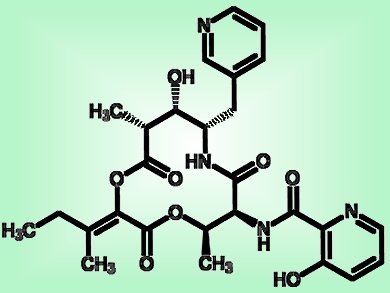Ruben C. Hartkoorn, Global Health Institute, Switzerland, and colleagues have shown how pyridomycin, a natural antibiotic produced by the bacterium Dactylosporangium fulvum, works. This promising drug candidate is active against many of the drug-resistant types of the tuberculosis bacteriua that no longer respond to treatment with the front-line drug isoniazid.
The researchers selected and isolated mutants of the tuberculosis bacterium Mycobacterium tuberculosis that are resistant to pyridomycin. By sequencing their genome a single gene named inhA was found to be responsible for resistance to pyridomycin.
The gene inhA is needed to produce the InhA protein, which is already known as a target for the tuberculosis drug isoniazid. Pyridomycin can bind to the same pocket on the InhA enzyme as isoniazid but at a different site and in a way that involves a different sequence of molecular events. It is these differences that give pyridomycin the ability to overcome drug-resistant strains of mycobacteria.
In live bacteria treatment with pyridomycin leads to the depletion of mycolic acids, fatty acids that are an essential component of the bacterial cell wall.
- Towards a new tuberculosis drug: pyridomycin – nature’s isoniazid,

R. C. Hartkoorn, C. Sala, J. Neres, F. Pojer, S. Magnet, R. Mukherjee, S. Uplekar, S. Boy-Röttger, K. H. Altmann, S. T. Cole,
EMBO Mol. Med. 2012.
DOI: 10.1002/emmm.201201689
EMBO Molecular Medicine, one of the highest cited journals in the biomedical sciences, is now a fully Open Access journal.




